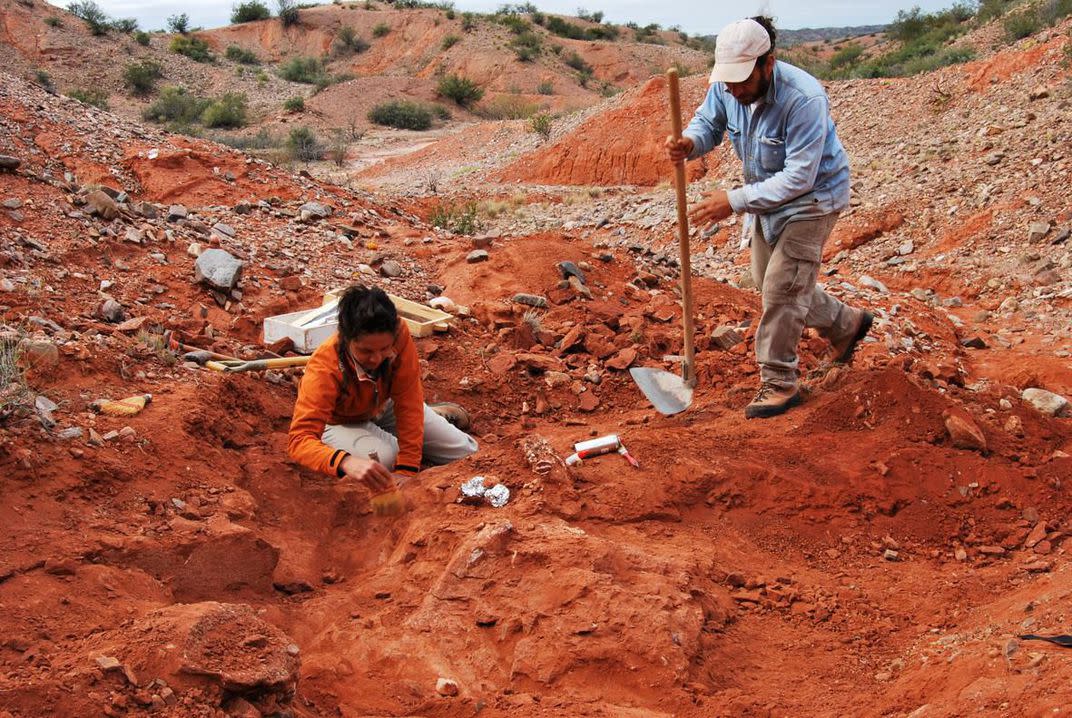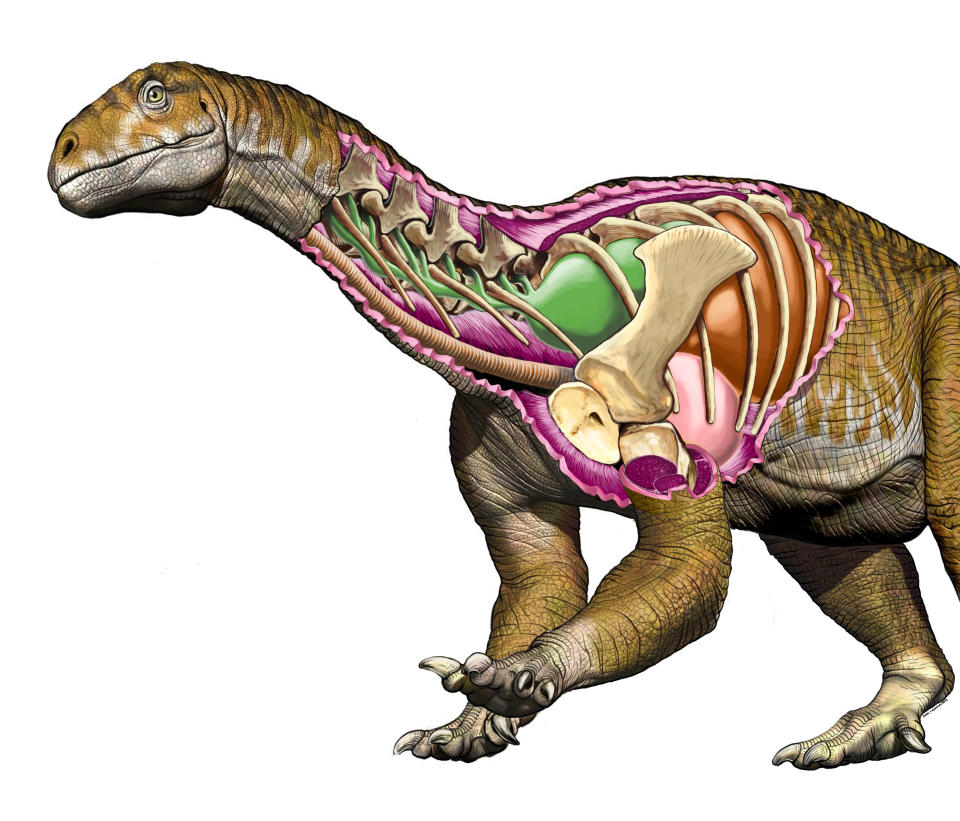Discovery of ‘first giant’ dinosaur could rewrite story of how huge beasts evolved

The bones of a gigantic dinosaur which would have weighed nine tonnes as a an adult could change the way palaeontologists believe dinosaurs evolved.
The remains of ‘Ingentia Prima’ (‘first giant’) were found in Argentina, and are three times the size of previously discovered dinosaur species from the Triassic.
Scientists previously believed that giant dinosaurs didn’t come into existence until 25 million years later.
Cecilia Apaldetti of the University of San Juan said, ‘Before this discovery, gigantism was considered to have emerged during the Jurassic period, approximately 180 million years ago, but Ingentia prima lived at the end of the Triassic, between 210 and 205 million years ago.’
‘We could see that it was a new species that we named Ingentia prima. That in Latin means the ‘first giant’.’

For dinosaurs, ‘gigantism’ was a survival tool, with herbivores using their huge size to defend against predators.
MORE: Donald Trump ‘confident’ North Korea will denuclearise
MORE: Babies conceived during winter sex are less likely to struggle with their weight
Ingentia prima was a four-legged herbivore which lived about 47 million years before diplodocus.



